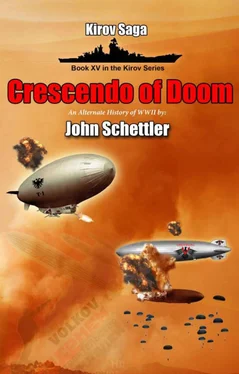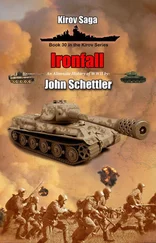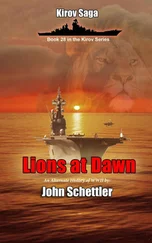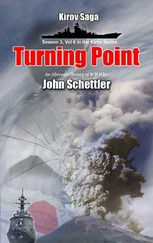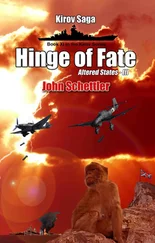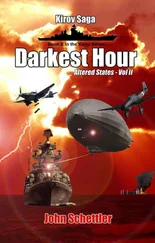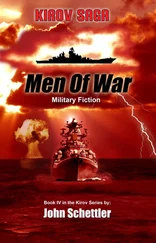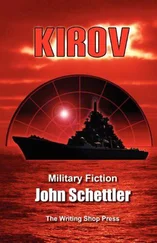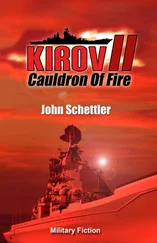“Ahoy! More ships off the port bow, and below. I think that’s Big Red out there!”
It was.
* * *
Old Krasny , Big Red, was fighting for her life at that moment. The news of the sudden incursion by the Orenburg fleet had shaken the morale of the Siberians. Karpov was gone, lost in that storm over the English Channel, and chaos had ensued. A big attack opened on the Ob River line, with at least five enemy divisions thrown into the fight. It was a major push to break through north of Novosibirsk, the place where Karpov had smashed the last enemy attack with his daring and innovative thermobaric bomb.
Then the airships came, the skies darkening with the first division of the Orenburg Northern fleet. The Siberians had only one ship in that sector, Yakutsk , and it was soon engaged by all of four enemy airships, the fleet flagship Orenburg among them. Brave Yakutsk but up a good fight, but was overmatched and blasted from the sky. Yet she had managed to make the enemy pay for her death, putting enough damage on two enemy airships that they were detached and sent home.
The remainder of that division hovered in the sky above the smoldering wreck of Yakutsk , as if they intended to feed on the carcass of the ship, watching until the hot fires laid the ravaged skeletal frame bare. Yet the ship had not died in vain. It put up just enough of a fight to buy the Siberian fleet a little time to rise for battle.
Aboard the Orenburg , Security Chief Kymchek had reported that the first enemy ship had fallen. With Pavlodar still burning when it was detached, and Talgar down at ground level with Saran to off load its troop contingent before returning home for repairs, Volkov’s main division was light, until reinforced by four more ships from the Caspian fleet. Two hours later, Admiral Zorki arrived with four battlecruiser class airships: Armavir, Anapa, Sochi and Salsk . They joined battlecruiser Saran and the fleet flagship Orenburg , and moved east in a massive formation of six airships, heading for Ilanskiy. Out in front of this formation, some 300 miles ahead, was the Southern Division under Admiral Gomel, with four more airships, battlecruisers all about 100,000 cubic meter capacity. This force, Sarkand, Tashkent, Samarkand , and Angren , would soon find an engage the hasty defense mounted by the enemy northeast of Ilanskiy.
There were two Siberian airships, the heavy cruiser Tomsk, a smaller 100,000 cubic meter ship , and the big battleship Krasnoyarsk , “Old Krasny,” as it was called by the Siberians. Big Red loomed over the scene, her massive bulk expanding with 180,000 cubic meter volume. That fight was raging in the sky when Volkov gave the order to begin air landing operations with the four ships of the Caspian Fleet. He would retain Orenburg and Saran on overwatch while he monitored both operations from the command capsule aboard the fleet flagship. It was an detachable armored chamber, hidden like an egg within the underlying bulk of Orenburg , just forward of the main gondola. From here Volkov could sit in relative safety, peering through observation ports, and receiving status updates from Kymchek over voice tubes and telegraph.
One day I will have to get a proper intercom system set up on this ship, he thought, but there were more urgent plans before him now. They were riding high, at 10,000 meters in darkening skies. Rain had followed them, a long cold front sweeping east in the wake of the fleet sortie. He had won his first battle, laying Yakutsk to rest easily enough, and the damage to his two heavy cruisers was not serious. But they would be out of the action for some time, though that was of little concern to him. He would now outnumber the enemy fleet ten to five in the immediate vicinity of Ilanskiy. They still had two more ships further east near lake Baikal watching the Japanese front, and he would deal with those in due course.
For now, two to one odds suited him very well, and so he ordered the Caspian Fleet to descend for troop deployment while the Southern Division dispatched the two enemy airships that had sallied out to challenge them. So there he sat, a cup of brandy in one hand, a pair of field glasses in the other, safely sheltered in the hidden armored sphere of his command capsule.
“Kymchek here,” came a voice through the tube to his right. “The fight ahead is going well. Tomsk is hit, and burning badly, but two of our ships report damage.”
That didn’t matter either. Volkov thought that he could lose all four ships in that division, and then still outnumber the Siberians six to three with his remaining ships. This was going to roll on to its inevitable outcome. It was simply a matter of having more men, material, and insurmountable odds in his favor, and he knew he would prevail. What will they write about my little battle here in days ahead, he wondered?
“That storm astern is moving up on us fast,” said Kymchek.
“Never mind the weather, Kymchek. Just let me know when those two airships are destroyed.”
It was then that Volkov heard a tearing sound of lightning that was enough to send a chill down his spine. Perhaps I should mind the weather, he thought. This storm could complicate my troop landing operation, and if the wind rises too much it will scatter my airborne troops all over the taiga. Southern Division has all four battalions on the ground, but I’ll need the troops from the Caspian Division to have any chance of taking Ilanskiy. The men from the two airships I sent home will stand in reserve at Kansk…. Which reminded him, and he shouted a question at Kymchek through the voice tube.
“What about Kansk? Are my men there yet?”
“Kansk? Yes sir, they are outside the town now. We took the garrison there by surprise, and should have the place secured in a few hours time.”
“Good, Carry on, Kymchek.”
Again that searing lightning, sending a shudder through Volkov’s frame, and jostling his hand so much that he almost spilled his tea. I should be back in Orenburg in my study revising the plans for those new jet fighter craft I plan on selling to Germany. Yes, I have the plans, but they have the factories, a good marriage. I must go to Peenemunde to see how things are progressing with engine development. Once they get that right, then it will be much easier to apply that technology to missile development. That damn battlecruiser gave the Germans quite a shock, but that worked out well for me. Now that the Germans have seen what a good missile can do, they are much more interested in talking.
He smiled, then passed another moment of trepidation when he felt the ship shudder, the air quaver around him, and a strange crackling static infested a brief moment of hushed stillness. What was happening?
“Kymchek? What in god’s name is going on? Is the ship under attack? I thought you told me the zone was secure for this landing operation!”
Silence. No voice in return, but then the sounds of men yelling, their voices distended and hollow through the voice tube. There was some great commotion underway on the bridge, and Volkov leaned to the nearest viewport, straining to see what was happening outside.
The sound of a recoilless rifle barrage joined the thunder of the storm with a sharp report. Then came the voice of Captain Grankin, hard and fraught with alarm, through the voice tube. “Ship off the starboard aft quarter! We are under attack!”
Tunguska was a truly massive airship, the largest craft that had ever flown in the skies above the earth. With 225,000 cubic meter volume, it was also the longest craft ever to fly at over 1000 feet. A modern day 747 jumbo jet would seem a small thing in passing. And the ship had power to match its size, with twelve 76mm recoilless rifles, and twelve more larger guns at 105mm. To these Karpov had added two missile racks, one with 36 RS82mm rockets, and one with 24 larger RS132mm rockets. For air defense the ship deployed six twin 20mm gun mounts and eighteen heavy machineguns, though these were mainly used against small aircraft of the day. In a duel between airships, it was the larger recoilless rifles that would do the real damage. The innovative self-sealing lining on the interior gas bags could only be frustrated by a round of at least 76mm, which could defeat the resealing effort and cause a permanent rupture. The 105mm rifles were even better, and came to be called “the bag busters” in the air service.
Читать дальше
